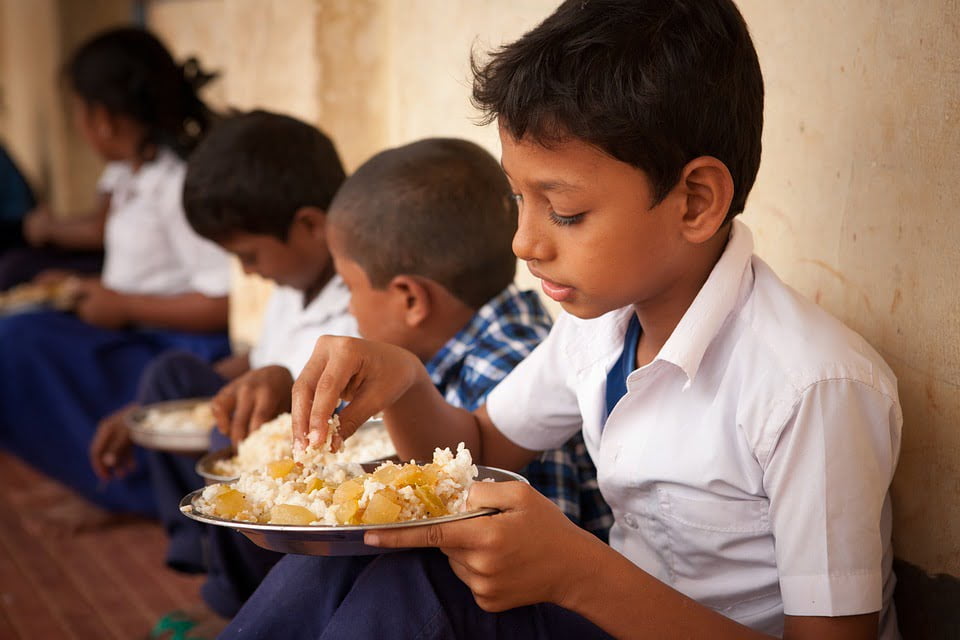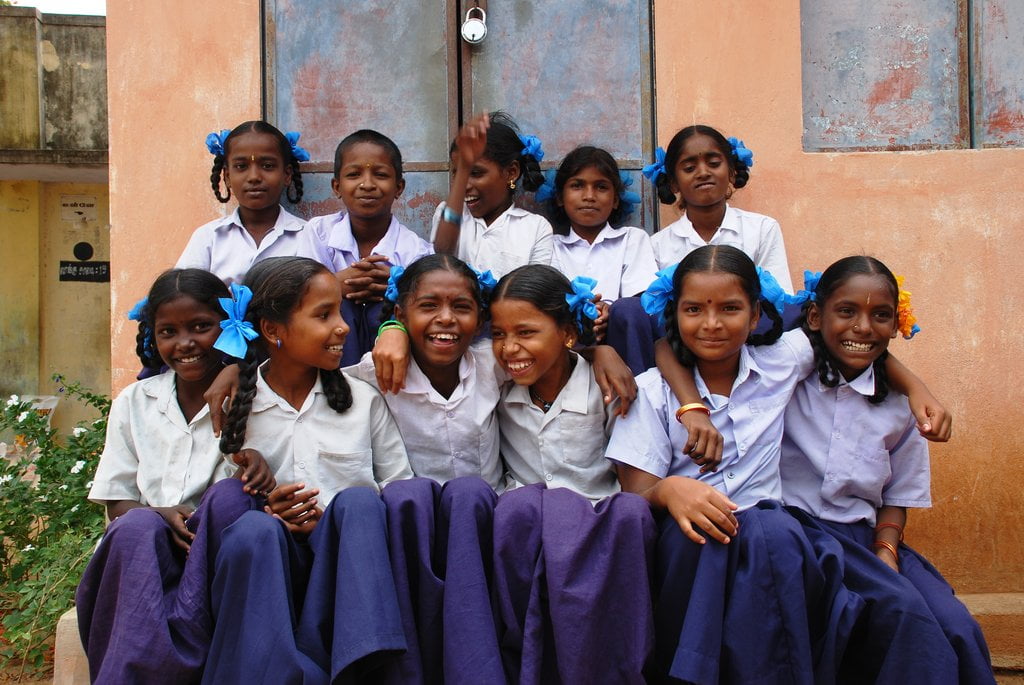India ranks 62nd in total public expenditure on education per student and measure of the quality of education (pupil-teacher ratio in primary and in secondary education) per the IMD, and spent 3 percent of its total GDP on education in 2018-19. Changes in the education system are welcome, such as parts of the National Education Policy, but there are root causes that need to be addressed first. The difference between education available to rural households and urban households, in relation to both access to education and class mobility, show that the foundation of education still needs to be strengthened.
The Existing Data
A survey on ‘Household Social Consumption: Education’ was conducted in NSS 75th round (July 2017-June 2018). A sample of 64,519 rural households from 8,097 villages and 49,238 urban households from 6,188 blocks were surveyed all over India. The average household size was 4.5 in rural areas and 3.8 in urban areas. The estimate of males includes transgender people, but strangely fails to specify whether this includes all trans persons in general or only trans men.
There are a few points from them, along with some tables highlighting the statistics.
Distance from school: Primary education was within 1 kilometer’s distance for 92.7percent of the rural areas and 87.2percent of urban areas. However, this changes when one goes to higher classes, as only 68 percent of rural households have an upper primary school that close, and only 38 percent have a secondary school that close. Comparatively, 80 percent of urban households reported upper primary schools within a kilometre and 70 percent reported secondary schools within such a distance. In secondary school, urban households are at a distance of 5km and more for only 1.3percent, while in rural areas, secondary schools are at that distance for 13.5percent of people.
Free education: 77 percent of the students studying in government institutions were receiving free education (nearly 81 percent in rural areas and 62 percent in urban areas). At primary level, the proportion of students receiving free education was 62 percent (nearly 72 percent in rural areas and 31 percent in urban areas).
At upper primary/middle level, 72 percent of students from rural areas and 36 percent from urban areas were getting free education. The proportion was 26 percent and 14 percent at higher secondary level respectively in rural and urban areas. However, education is considered free only when the student was not required to pay any fees. The student might still have to incur expenditure for textbooks, stationery, uniforms etc.
Changes in the education system are welcome, such as parts of the National Education Policy, but there are root causes that need to be addressed first. The difference between education available to rural households and urban households, in relation to both access to education and class mobility, show that the foundation of education still needs to be strengthened.
Attendance: Net Attendance Ratios (NAR: the ratio of the number of persons in the official age-group attending a particular level of education to the total number persons in the age-group) in India at primary level were 86.8 percent for males (86.6 percent in rural and 87.7 percent in urban) and 85.1 percent for females (84.8 percent in rural and 86.2 percent in urban). In the upper primary level this decreases to 72.5 percent for males (72.1 percent in rural areas and 73.5 percent in urban areas) and 71.8 percent for females (70.7 percent in rural areas compared to 75.0 percent in urban areas.
At secondary level NARs were 57.9 percent for males (56.6 percent in rural and 61.5 percent in urban) and 57.3 percent for females (55.2 percent in rural compared to 63.7 percent in urban areas). Age-specific Attendance Ratios in the age-group 18-23 years for males and females were respectively 32.6 percent and 24.6 percent.
Enrollment rates: Nearly 13 percent of male and 19 percent females aged 3-35 years in rural areas, compared to 7 percent among males and 10 percent among females in the same ages in urban areas never enrolled in any educational institution. In rural areas the major reason (20 percent) for never enrolling was due to the lack of interest in education, while in urban areas they never enrolled because of financial constraints (19.4 percent).
Digital divide: Only 4 percent of rural households and 23 percent of urban households possessed computers. Up to 24 percent of the households in the country had internet access in the survey year, the proportions being 15 percent among rural households and 42 percent among urban households. Nearly 35 percent of persons aged 15-29 years reported use of the internet a month before the survey—the ratio was 25 percent in rural areas and 58 percent in urban areas.
Years of education: Nearly 9 percent Indians hold a graduation degree on average. However, in rural areas, the number was as low as 5.7 percent, while in urban areas it was around 21.7 percent. The gross enrollment rate for people in post higher secondary level in rural areas was 18.6 percent compared to 34 percent in urban areas.
Education: The Great Equaliser?
Education is often heard of as being a ‘great equaliser’. While this is a convincing argument and there is proof of it, it cannot be denied that there is still a long way to go to make education equitable instead of just allowing for equal access to it. In other words, there are different methods and strategies needed to draw in more rural children into schools and to keep them there, as compared to the strategies in place in urban areas or employed currently in rural areas. One such strategy is the mid-day meal scheme—one of the major driving reasons for children going to school is that food would be made available to them.

Schools also do not exist in a vacuum—they are part and parcel of the world around us and are equally influenceable by political and social climates. That is, schools exist through their relations to other powerful institutions, either through diplomacy, funding, or political leanings. We can then see the world’s inequalities generally reinforced and reproduced by schools, though of course, not solely by them. In The Price of Inequality, Joseph Stiglitz highlights that while higher education does not guarantee success for students from poor backgrounds, it does help in making more options available to them.
Theories of Education and How They Reproduce Inequalities
This theory of education reinforcing the world around us has been studied in-depth, predominantly by conflict theorists on education. They do not believe that public/government schools reduce social inequality. Rather, they believe that the educational system reinforces social inequalities that arise from differences in class, gender, race, and ethnicity. Educational systems end up preserving the status quo and turning people more obedient. Students of low socioeconomic status are usually not afforded the same opportunities as students of higher status, no matter how great their academic ability or desire to learn.
Pierre Bourdieu, a French sociologist, extensively studied how the cultural capital or cultural knowledge that serves as a currency helps one navigate a culture, and alters the experiences and opportunities available to French students from different social classes. Members of the upper and middle classes had more cultural capital than those in the lower-class. As a result, the educational system maintains a cycle in which the dominant culture’s values are rewarded.
Schooling in Capitalist America: Educational Reform and the Contradictions of Economic Life a book published by economists Samuel Bowles and Herbert Gintis in 1976 speaks of something along the same lines. Considered a groundbreaking work in the sociology of education, it states that a “correspondence principle” shows how the internal workings of a school correspond to the organisation of a capitalist workforce in its norms, and values.

For example, the authors show that the hierarchy system in schools is a reflection of the structure of the labour market, with the head-teacher as the one who calls the shots, with the students being in a hierarchy. Discipline and uniformity are encouraged more than standing out, as is usually the case in the workplace for lower-level employees. Those of a higher class and, in this example, also a higher job title, are afforded more freedom. Under the influence of rote-learning and tuitions and grades, where the student aims for external fulfilment through marks, we then turn into workers that have no intrinsic motivation to work but are motivated by salaries. Education, therefore, serves only as a point of entry into the labour market per this theory.
Also read: COVID-19: Inequalities Surface As Schools Demand Productivity From Students
Michael Apple, a professor of Education at the University of Wisconsin, focuses on ideology even in curriculum. Schools control both people and meaning. They spread and save what is seen as the ‘right kind of knowledge.’ However, this is still decided by a group, and this comes from their economic and social power, which is then exerted onto the others, i.e. the learners. Power and culture, therefore, are “attributes of existing economic relations in a society. They are dialectically interwoven so that economic power and control is interconnected with cultural power and control.”
All these theories, which might seem excessive right off the bat, go on to show how inequalities in education start from a very basic level. Something as simple as schools not being near enough to their homes, or a lack of facilities, is enough to deter children or parents from sending their kids to school. Even leaving school to take care of other economic activities comes from there not being a system in place that manages to cater better to rural children. Simply building schools in rural areas is not the solution—there need to be processes in place that would allow them to continue their education, that motivates them to be in school, and pathways made to access more opportunities.
Something as simple as schools not being near enough to their homes, or a lack of facilities, is enough to deter children or parents from sending their kids to school. Even leaving school to take care of other economic activities comes from there not being a system in place that manages to cater better to rural children. Simply building schools in rural areas is not the solution—there need to be processes in place that would allow them to continue their education, that motivates them to be in school, and pathways made to access more opportunities.
The Need To Focus On Rural Education
Considering that more than 68 percent of India still lives in rural areas (per the 2011 census), this is a large part of the population that needs the additional planning. Public schools need to be the strongholds of learning. While most in the rural areas attend public institutions, those who attend private ones were asked about their decision, and 37.5 percent responded by saying that they prefer private institutions due to the quality of education while the next highest number of people (25 percent) stated that they go to private institutions because it’s closer.
In a paper commissioned for the EFA Global Monitoring Report 2003/4 The Leap to Equality by the UN, Vimala Ramachandran in 2003 highlights something very important: “[…] the growth in social demand for education and skills including in strata earlier considered as uninterested in education. Schooling has emerged as a social norm in most parts of this diverse country. The tragedy is not that there is no demand or there is no desire for education. The tragedy is that good quality education that is relevant to all – especially the poor in rural and urban areas – remains elusive.”
Also read: The Increasing Social Exclusion In Private Schools In Urban India
With new situations like the pandemic arising, and teaching moving online, it shows how the idea of a digital India needs to be prevalent in rural classrooms too. With the increase of children not able to attend classes due to lack of funds, technology, or just time, the prime areas that need to be focused on in providing equal opportunities to all are now out in the open.
Featured Image Source: GlobalGiving
About the author(s)
Zoon (she/they) enjoys writing about all things under the sun, but right now sticks to feminism, Islam, and food. She is also fond of the outdoors, art, and reading up on folk cultures.




